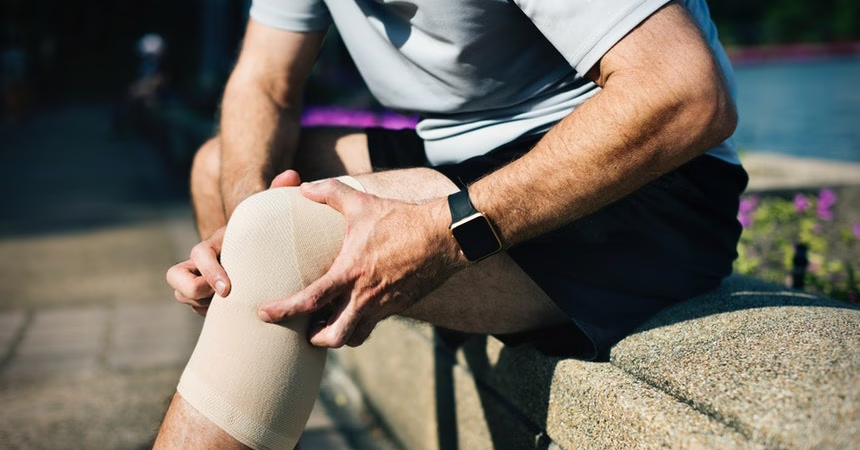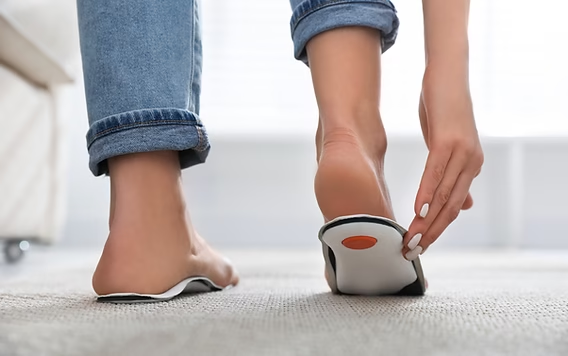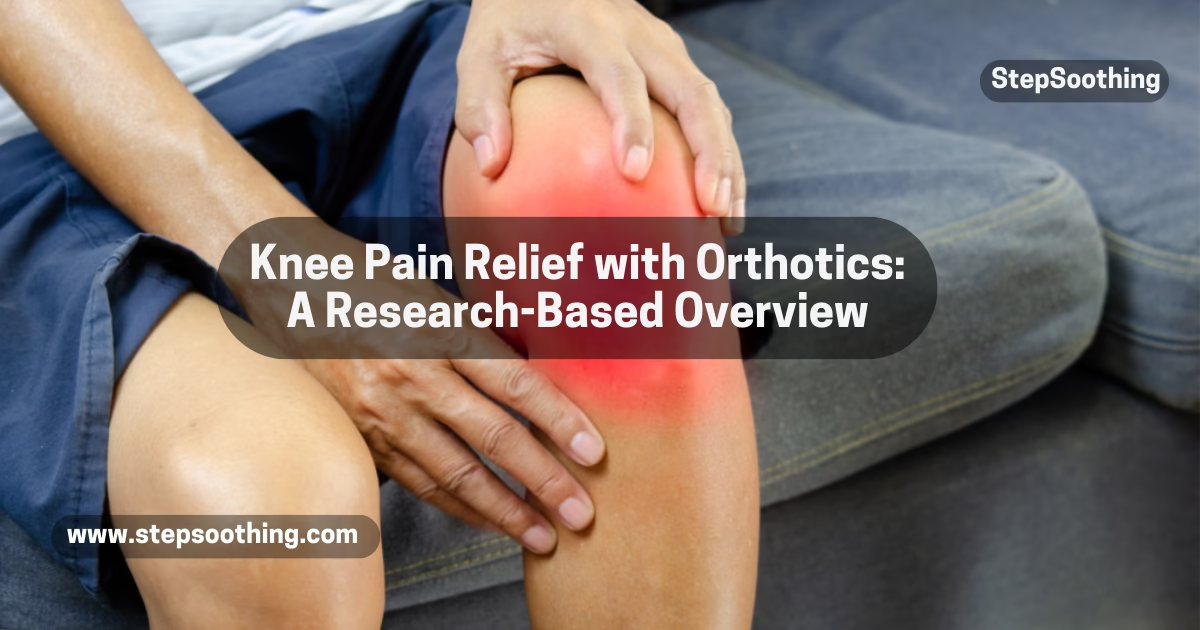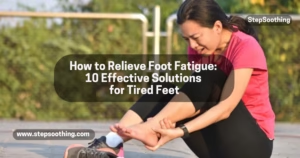Knee pain, often caused by osteoarthritis (OA), is a major issue for older adults, leading to discomfort and reduced mobility. As OA progresses, increased load on the knee joint worsens the condition. Many patients turn to non-surgical treatments like orthotics—insoles, knee braces, and shock-absorbing footwear—to relieve pain and improve function. While evidence supports their effectiveness, results are mixed, and further research on orthotics and knee pain relief is needed. This article explores the scientific evidence, types of orthotics, factors affecting their success, and advancements in design to improve comfort and compliance.
Research on Orthotics and Knee Pain Relief

Understanding Knee Pain and Its Causes
Knee pain is a common problem, especially among older adults, often due to knee osteoarthritis (OA), a progressive degenerative disease. This condition leads to major pain, disability, and impacts quality of life (QoL). Excessive load on the medial knee joint can exacerbate the issue, accelerating disease progression. Studies show that biomechanical loading plays a significant role in damages to the medial compartment, leading to cartilage degeneration and functional limitations.
The Role of Orthotics in Knee Pain Management
Many patients turn to conservative, non-surgical strategies like orthotic devices for relief. Orthopaedic insoles, shock-absorbing insoles, and lateral-wedge insoles aim to reduce load, correct varus knee alignment, and enhance walking comfort. Footwear modifications are also used to limit medial knee compartment load. However, clinical evidence on their effectiveness is mixed, requiring further randomized controlled trials (RCTs) and systematic reviews to evaluate their true impact.
Examining Scientific Evidence on Orthotics
A meta-analysis and systematic review published on 16 February 2021 examined various studies on knee orthoses and insoles. Results found limited but promising effects in certain cases. A study on semi-rigid knee orthoses involving 24 participants showed a 41% decrease in night pain and a 48% reduction in pain during walking, sitting, and stair climbing after a six-week orthosis intervention. Similarly, an application-based assessment recorded a 20.2-minute increase in physical activity and an improvement in functional capacity.
Effectiveness of Different Orthotic Solutions
Orthopaedic and Lateral-Wedge Insoles
Lateral-wedge insoles are designed to redistribute pressure and reduce knee adduction moment. However, previous meta-analysis and recent randomized controlled trials found that they did not significantly attenuate knee pain. Healthy control subjects showed different responses compared to patients with medial knee osteoarthritis (mKOA), emphasizing the need for stratified analyses.
Knee Braces and Semi-Rigid Knee Orthoses
Knee braces, including valgus bracing, aim to improve clinical results by reducing load on the medial knee joint. Some models, like the three-point pressure knee orthosis, use stretching straps and medial bars to apply external force, helping with stance phase walking. However, treatments can be cumbersome, expensive, and require appropriate long-term therapy for best results. Device-based assessments, like Orthotimer, help objectively detect wear time and track compliance.

Factors That Influence Orthotic Success
The outcomes of orthotic therapy depend on individual biomechanics, severity of OA, and proper fitting. Custom-made solutions, such as AFO devices, often yield better comfort and support. Additionally, exercise therapy, physical activity (PA), and weight management are vital in minimizing pain and enhancing quality of life. Studies by Park, Ko, Choi, Min, Ahn, Kim, Koh, and Han using Korea National Health Insurance data showed that reduced PA, muscle weakness, and excess body weight correlate with higher mechanical joint loading, accelerating degenerative processes and increasing cardiovascular disease (CVD) risk.
Advancements in Orthotic Design
New technological advancements have led to better orthotic designs that strike a balance between support and flexibility. Thin metal bars, patellar stabilization, and laterally placed reinforcements contribute to increased efficacy. The GenuTrain OA by Bauerfeind AG integrates an elastic circular mesh fabric with a lateral joint splint, promoting increased physical mobility and extended periods of wear. Despite encouraging biomechanical results, limited compliance due to lack of comfort remains a challenge.
Future Considerations in Knee Pain Management
As knee osteoarthritis continues to be a major public health concern, ongoing longer clinical trials are necessary to understand the impact of non-surgical interventions. The integration of functional treatment, patient-centered approaches, and extensive palliative treatment will contribute to improved daily activities, athletic participation, and overall QoL. More research is needed to draw strong conclusions on how orthotic solutions can best be tailored to different patients with varying OA severities.
People Also Asked
What are the main causes of knee pain in older adults?
Knee pain in older adults is often caused by knee osteoarthritis (OA), a degenerative disease that results in cartilage breakdown and increased pain and disability. Excessive load on the medial knee joint accelerates OA progression.
How do orthotics help with knee pain?
Orthotics, including insoles and knee braces, are used to reduce joint load, improve knee alignment, and provide comfort. They aim to redistribute pressure and improve walking mechanics, helping alleviate pain from conditions like knee osteoarthritis.
Are lateral-wedge insoles effective for knee pain?
Lateral-wedge insoles may offer some benefits by redistributing pressure on the knee joint, but studies show mixed results regarding their effectiveness in reducing knee pain. Individual responses vary, particularly between healthy individuals and those with medial knee osteoarthritis (mKOA).
Can knee braces and orthoses significantly reduce pain?
Knee braces, particularly semi-rigid orthoses, can significantly reduce pain, with some studies showing a 41% reduction in night pain and a 48% decrease in pain during activities like walking and stair climbing. However, these devices can be expensive and require consistent use.
What factors influence the success of orthotic therapy?
The success of orthotic therapy depends on factors such as individual biomechanics, the severity of osteoarthritis, proper fitting, and patient adherence. Additional factors like physical activity, exercise, and weight management play a critical role in maximizing the benefits of orthotics.
Key Points Research on orthotics and knee pain relief
- Knee Pain and Osteoarthritis: Knee osteoarthritis (OA) is a common cause of knee pain, especially in older adults, often exacerbated by excessive loading on the medial knee joint.
- Role of Orthotics: Orthotic devices such as insoles, knee braces, and lateral-wedge insoles aim to reduce joint load, improve alignment, and provide comfort. While evidence on their effectiveness is mixed, some studies show promising results.
- Scientific Evidence: Studies, including a 2021 meta-analysis, suggest that orthotic interventions, such as semi-rigid knee orthoses, can significantly reduce pain and increase physical activity levels, but more research is needed to establish definitive effectiveness.
- Factors for Success: Orthotic therapy success relies on proper fitting, the severity of OA, individual biomechanics, and additional factors like exercise and weight management to reduce joint stress and improve outcomes.
- Technological Advancements: New orthotic designs are integrating better materials and structures, such as elastic mesh fabrics and metal reinforcements, to balance support with comfort and improve long-term wear compliance.
References for more Information
1. Understanding Knee Osteoarthritis (OA) and Its Causes
2. The Role of Orthotics in Knee Pain Management
3. Effectiveness of Lateral-Wedge Insoles and Knee Braces
4. Patient-Centered Approaches to Knee Pain Management
5. Latest studies on insole effectiveness



